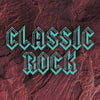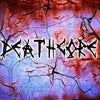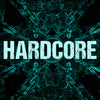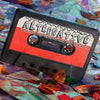Marilyn Manson - Officially Licensed Merchandise
Marilyn Manson, known for his provocative persona and darkly theatrical music, rose to fame in the mid-90s. Formed by Manson (Brian Warner) and guitarist Daisy Berkowitz, the band’s shock rock aesthetic and controversial themes garnered both fame and notoriety. Albums.... Show More like Antichrist Superstar and Mechanical Animals challenged social norms, mixing industrial, goth, and alternative rock. Known for his distinctive voice, provocative lyrics, and intense live shows, Manson became a cultural icon, embodying themes of rebellion and introspection. His influence spans rock, goth, and industrial music, making him a polarizing yet iconic figure.
2. Mechanical Animals (1998) - Known for songs like “The Dope Show” and “I Don’t Like the Drugs (But the Drugs Like Me),” this album introduced a glam-inspired sound with introspective themes.
3. Holy Wood (In the Shadow of the Valley of Death) (2000) - With songs like “Disposable Teens” and “The Nobodies,” this album tackled themes of fame and religion, resonating with fans.
4. The Golden Age of Grotesque (2003) - Known for its cabaret influence and tracks like “mOBSCENE” and “This Is the New Shit,” this album showcases Manson’s theatrical, rebellious side.
5. The Pale Emperor (2015) - Featuring a blues-influenced sound with songs like “Third Day of a Seven Day Binge” and “Deep Six,” this album marked a mature, refined direction for Manson.
Twiggy Ramirez (Bass, Guitar): A longtime collaborator, Ramirez (Jeordie White) contributed significantly to Manson’s sound with his dark, experimental bass and guitar lines. Known for his creativity and onstage presence, Ramirez played a crucial role in shaping albums like Antichrist Superstar.
Daisy Berkowitz (Guitar): As a founding member, Berkowitz (Scott Putesky) helped shape Manson’s early sound with his horror-inspired, distorted guitar work, playing a major role on Portrait of an American Family.
John 5 (Guitar): Known for his technical skill and innovative style, John 5 brought a new dimension to Manson’s music, especially on Holy Wood. His virtuosic playing and unique style expanded Manson’s sound and contributed to his later albums.
Ginger Fish (Drums): Fish’s powerful drumming and theatrical style became a staple of Manson’s live shows, adding to the dark, intense atmosphere. His contributions were central during Manson’s most successful years.
Marilyn Manson
2. Mechanical Animals (1998) - Known for songs like “The Dope Show” and “I Don’t Like the Drugs (But the Drugs Like Me),” this album introduced a glam-inspired sound with introspective themes.
3. Holy Wood (In the Shadow of the Valley of Death) (2000) - With songs like “Disposable Teens” and “The Nobodies,” this album tackled themes of fame and religion, resonating with fans.
4. The Golden Age of Grotesque (2003) - Known for its cabaret influence and tracks like “mOBSCENE” and “This Is the New Shit,” this album showcases Manson’s theatrical, rebellious side.
5. The Pale Emperor (2015) - Featuring a blues-influenced sound with songs like “Third Day of a Seven Day Binge” and “Deep Six,” this album marked a mature, refined direction for Manson.
Twiggy Ramirez (Bass, Guitar): A longtime collaborator, Ramirez (Jeordie White) contributed significantly to Manson’s sound with his dark, experimental bass and guitar lines. Known for his creativity and onstage presence, Ramirez played a crucial role in shaping albums like Antichrist Superstar.
Daisy Berkowitz (Guitar): As a founding member, Berkowitz (Scott Putesky) helped shape Manson’s early sound with his horror-inspired, distorted guitar work, playing a major role on Portrait of an American Family.
John 5 (Guitar): Known for his technical skill and innovative style, John 5 brought a new dimension to Manson’s music, especially on Holy Wood. His virtuosic playing and unique style expanded Manson’s sound and contributed to his later albums.
Ginger Fish (Drums): Fish’s powerful drumming and theatrical style became a staple of Manson’s live shows, adding to the dark, intense atmosphere. His contributions were central during Manson’s most successful years.
Oops! there are no products in this collection.
But check out our top trending products.
FEATURED GENRES
Marilyn Manson, known for his provocative persona and darkly theatrical music, rose to fame in the mid-90s. Formed by Manson (Brian Warner) and guitarist Daisy Berkowitz, the band’s shock rock aesthetic and controversial themes garnered both fame and notoriety. Albums.... Show More like Antichrist Superstar and Mechanical Animals challenged social norms, mixing industrial, goth, and alternative rock. Known for his distinctive voice, provocative lyrics, and intense live shows, Manson became a cultural icon, embodying themes of rebellion and introspection. His influence spans rock, goth, and industrial music, making him a polarizing yet iconic figure.
2. Mechanical Animals (1998) - Known for songs like “The Dope Show” and “I Don’t Like the Drugs (But the Drugs Like Me),” this album introduced a glam-inspired sound with introspective themes.
3. Holy Wood (In the Shadow of the Valley of Death) (2000) - With songs like “Disposable Teens” and “The Nobodies,” this album tackled themes of fame and religion, resonating with fans.
4. The Golden Age of Grotesque (2003) - Known for its cabaret influence and tracks like “mOBSCENE” and “This Is the New Shit,” this album showcases Manson’s theatrical, rebellious side.
5. The Pale Emperor (2015) - Featuring a blues-influenced sound with songs like “Third Day of a Seven Day Binge” and “Deep Six,” this album marked a mature, refined direction for Manson.
Twiggy Ramirez (Bass, Guitar): A longtime collaborator, Ramirez (Jeordie White) contributed significantly to Manson’s sound with his dark, experimental bass and guitar lines. Known for his creativity and onstage presence, Ramirez played a crucial role in shaping albums like Antichrist Superstar.
Daisy Berkowitz (Guitar): As a founding member, Berkowitz (Scott Putesky) helped shape Manson’s early sound with his horror-inspired, distorted guitar work, playing a major role on Portrait of an American Family.
John 5 (Guitar): Known for his technical skill and innovative style, John 5 brought a new dimension to Manson’s music, especially on Holy Wood. His virtuosic playing and unique style expanded Manson’s sound and contributed to his later albums.
Ginger Fish (Drums): Fish’s powerful drumming and theatrical style became a staple of Manson’s live shows, adding to the dark, intense atmosphere. His contributions were central during Manson’s most successful years.












